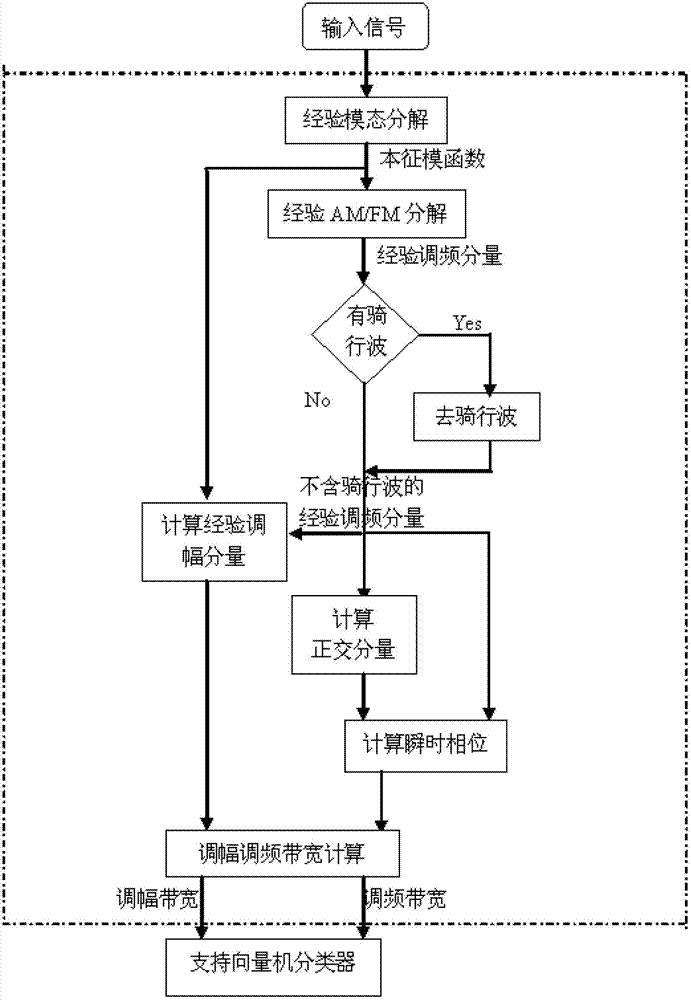Classification method of electroencephalogram signal
A signal classification and electroencephalogram technology, applied in medical science, sensors, diagnostic recording/measurement, etc., can solve problems such as distortion, increase in the number of riding waves, and lack of local characteristics, so as to reduce distortion, save time and effect of space
- Summary
- Abstract
- Description
- Claims
- Application Information
AI Technical Summary
Problems solved by technology
Method used
Image
Examples
Embodiment Construction
[0064] The preferred embodiments of the present invention will be specifically described below in conjunction with the accompanying drawings.
[0065] In this embodiment, firstly, the input EEG signal is subjected to empirical mode decomposition, and the EEG signal is decomposed into the sum of some eigenmode functions, and then for each eigenmode function, the amplitude modulation is extracted by the empirical AM-FM decomposition method. Bandwidth and FM bandwidth, and used as the input of the support vector machine to classify the EEG signal.
[0066] ideally attenuates chirp signals x ( t ) = 2 ( α / π ) 1 / 4 exp ( - αt 2 / 2...
PUM
 Login to View More
Login to View More Abstract
Description
Claims
Application Information
 Login to View More
Login to View More - R&D
- Intellectual Property
- Life Sciences
- Materials
- Tech Scout
- Unparalleled Data Quality
- Higher Quality Content
- 60% Fewer Hallucinations
Browse by: Latest US Patents, China's latest patents, Technical Efficacy Thesaurus, Application Domain, Technology Topic, Popular Technical Reports.
© 2025 PatSnap. All rights reserved.Legal|Privacy policy|Modern Slavery Act Transparency Statement|Sitemap|About US| Contact US: help@patsnap.com



